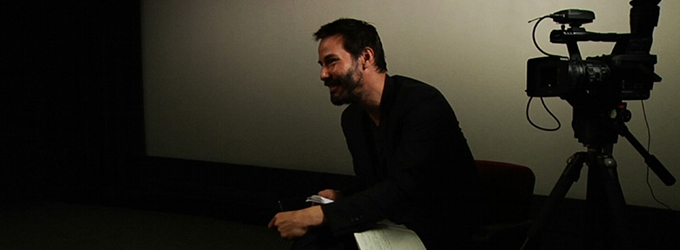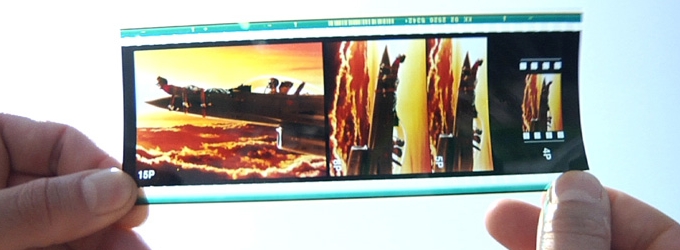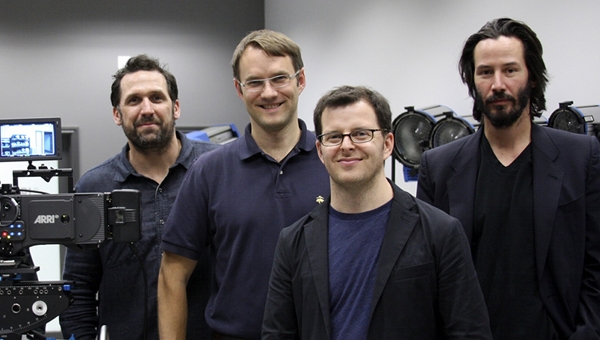 The world of film is changing – in fact, not a lot of it is actually ‘film’ any more. It hasn’t always been perceptible to the audiences of blockbuster fare, but the digital revolution has already had a profound effect on the films we watch. The current simultaneous existence of photochemical film and digital shooting in the middle of this is what SIDE BY SIDE attempts to document.
The world of film is changing – in fact, not a lot of it is actually ‘film’ any more. It hasn’t always been perceptible to the audiences of blockbuster fare, but the digital revolution has already had a profound effect on the films we watch. The current simultaneous existence of photochemical film and digital shooting in the middle of this is what SIDE BY SIDE attempts to document.
Insight is garnered by Keanu Reeves from the opinions of many, and Chris Kenneally’s film does an excellent job of showing why we should care about this, whilst not assuming too much prior knowledge. Using Reeves to interview a vast array of legends from all aspects of the world of film, SIDE BY SIDE is an perceptive look at the debates raging in the creative process.
Key to the endeavour is that passion for the topic should come across, and it certainly does in SIDE BY SIDE. Hearing Keanu Reeves take up James Cameron on exactly how ‘real’ AVATAR is, and the ensuing discussion, makes clear the palpable fascination for not only film as a medium, but how it is made and what effect that has on end products and the industry as a whole.
Aside from the main topic at hand, SIDE BY SIDE provides a great deal of insight into the people interviewed. It’s quite clear that James Cameron is as enthused by the ever-advancing technology of film, in and of itself, as he is by storytelling – hence his pioneering of the recent 3D resurgence. Martin Scorsese seems less entranced by technology alone, but rather what he can do with it as a filmmaker and storyteller. When Martin Scorsese tells you advanced techniques are tools at your disposal as an individual director, you have to sit up and take note.
At first the subject matter could seem a rather niche topic, but the efforts taken to explain different roles and stages in the process make SIDE BY SIDE far more accessible than it has any license to be. This isn’t to say the film is dumbed down – far from it – but simply that it succeeds in not getting bogged down in jargon (or it at least explains necessary points). This undoubtedly makes the film more accessible, but for the initiated it also serves as scene-setting and helps to structure the documentary by looking not just at the physical film format, but showing effects of digital technology at each stage of the creative process.

…the continued existence of film as a medium, and the comparative cheapness of digital, has a discernible effect on the type, quality and breadth of films we, the audience, get to see.
The average moviegoer, quite frankly, doesn’t give much of a toss about the format a film was shot on – especially as the quality of digital film increases. It’s unlikely that a large proportion of the audience were aware of the fact SKYFALL was shot in digital, and IN TIME, another Roger Deakins digital foray, is cited in SIDE BY SIDE as a recent example of how far digital has come. However, the continued existence of film as a medium, and the comparative cheapness of digital, has a discernible effect on the type, quality and breadth of films audiences get to see. Much has been discussed about the effect of digital film making, and the democratisation of film is covered in SIDE BY SIDE. It is quite striking when some interviewees are forthright in their opinion that this is not necessarily a good thing.
Many of those interviewed view digital or film as a choice to be made by the filmmaker even if, with digital being far cheaper, it isn’t quite as simple as that. Voices are heard, primarily Christopher Nolan and Wally Pfister (“Why would a trade my oil paints in for a set of crayons?”), that worry about the persistence of film as a choice to film makers as a result. On the flip side however, Danny Boyle – despite still describing film as “the holy grail” – indicates that the stunning shots of deserted London from so many angles in 28 DAYS LATER would not have been possible without small digital cameras.
It is to SIDE BY SIDE’s credit that the film as an entity remains fairly stand-offish in terms of presenting the pros and cons of the decline of the film format. SIDE BY SIDE is a truly engrossing film on several levels – either as an introduction to the concept, a examination of film maker’s attitudes to the ongoing evolution of the process or even a portrait of several luminaries of the film industry. SIDE BY SIDE is crammed with fascinating insight from fascinating people. The film’s breadth of opinions – of which there are too many to recount in a single article – indicates that there is no ‘right’ choice, and impressively captures a debate that may not rage forever.
SIDE BY SIDE will screen on February 15th nationwide and at the Arts Picturehouse, Cambridge. Members of TAKE ONE and Cambridge 105FM will lead an audience discussion after the screening on the future of cinema. Buy tickets here.
Read Jim Ross’s interview with director Chris Kenneally here.
httpvh://www.youtube.com/watch?v=aFGJY_NJwwg


One thought on “Side By Side”
Comments are closed.